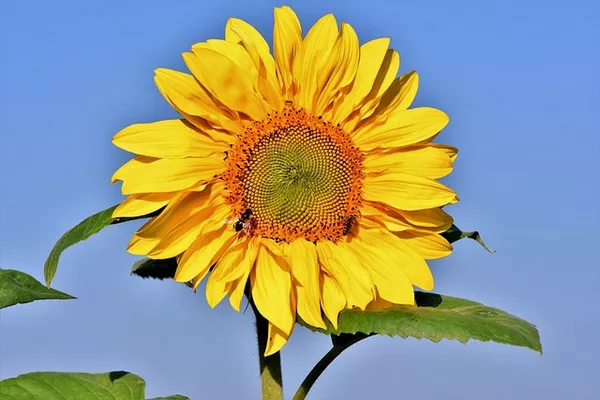Sunflowers, with their vibrant hues and towering presence, have captivated human imagination for centuries. Beyond their aesthetic appeal, these majestic blooms hold a profound significance across various cultures, disciplines, and ecosystems. From symbolizing resilience and optimism to serving as vital ecological indicators, sunflowers stand as a testament to the interconnectedness between nature and human society. This article delves into the multifaceted significance of sunflowers, exploring their cultural, ecological, and scientific importance.
Cultural Symbolism
Across cultures worldwide, sunflowers have been revered for their symbolic richness and cultural significance. In many societies, these radiant blooms are associated with positivity, warmth, and longevity. Their name derives from their unique behavior of turning their faces to follow the sun’s movement, symbolizing adoration, loyalty, and spiritual faithfulness.
In Native American cultures, sunflowers hold sacred symbolism, representing the sun deity and embodying qualities of strength, vitality, and fertility. Tribes such as the Lakota and Navajo utilized sunflowers in rituals, ceremonies, and medicinal practices, attributing them with healing properties and spiritual protection.
Similarly, in ancient Greek mythology, the sunflower is linked to the story of Clytie, a water nymph who pined for the sun god Apollo. Transformed into a sunflower, she continued to gaze longingly at Apollo as he traversed the sky, symbolizing eternal devotion and unrequited love.
In contemporary culture, sunflowers have become emblematic of positivity, hope, and resilience. Their bright, cheerful blooms often adorn celebrations, weddings, and festive occasions, conveying messages of joy and optimism. Moreover, the sunflower’s popularity in art, literature, and popular culture further underscores its enduring significance as a symbol of beauty and vitality.
Ecological Importance
Beyond their symbolic value, sunflowers play a crucial role in maintaining ecological balance and biodiversity within various ecosystems. As native plants to North and South America, sunflowers are integral components of prairie and grassland habitats, providing essential resources for a diverse array of wildlife.
Sunflower fields serve as vital habitats and food sources for numerous species, including bees, butterflies, birds, and small mammals. The nectar and pollen-rich flowers attract pollinators, facilitating the reproduction of countless plant species and supporting agricultural productivity. In particular, sunflowers are renowned for their role in honey production, yielding high-quality nectar sought after by beekeepers.
Moreover, sunflower seeds are a valuable food source for wildlife, contributing to the diets of birds such as finches, sparrows, and doves. The seeds’ high protein content makes them a nutritious supplement for animals during periods of scarcity, aiding in their survival and reproductive success.
In agricultural landscapes, sunflowers offer numerous ecological benefits, including soil stabilization, erosion control, and nutrient cycling. Their deep root systems enhance soil structure and fertility, reducing erosion and runoff while promoting water infiltration and retention. Additionally, sunflowers have been explored for their potential in phytoremediation, the process of using plants to remove pollutants from the environment, thus contributing to environmental remediation efforts.
Scientific Significance
From a scientific perspective, sunflowers have garnered attention for their remarkable adaptability, genetic diversity, and agricultural utility. Helianthus annuus, the common sunflower species, serves as a model organism for studying plant biology, genetics, and physiology, offering valuable insights into fundamental biological processes.
Researchers have exploited the genetic diversity of sunflowers to develop improved cultivars with desirable traits, such as disease resistance, drought tolerance, and high oil content. Sunflower oil, extracted from the seeds, is widely utilized in cooking, food processing, and industrial applications, making sunflowers a commercially significant crop worldwide.
Furthermore, sunflower seeds are valued for their nutritional composition, comprising essential fatty acids, proteins, vitamins, and minerals. The cultivation of sunflower crops contributes to global food security and agricultural livelihoods, particularly in regions where other staple crops may struggle to thrive.
In addition to their agricultural and economic significance, sunflowers have garnered interest in fields such as biotechnology and renewable energy. Research efforts are underway to harness sunflower biomass for biofuel production, exploring its potential as a sustainable alternative to fossil fuels and mitigating greenhouse gas emissions.
Conclusion
In summary, sunflowers represent far more than just ornamental blooms; they embody a rich tapestry of cultural, ecological, and scientific significance. As symbols of resilience, vitality, and hope, sunflowers inspire awe and admiration across diverse cultures and disciplines. Ecologically, they play indispensable roles in supporting biodiversity, sustaining ecosystems, and enhancing agricultural sustainability. From a scientific standpoint, sunflowers offer valuable insights into genetics, agriculture, and renewable energy, showcasing their versatility and adaptability.
As we continue to navigate the complexities of our interconnected world, the significance of sunflowers serves as a poignant reminder of the profound connections between nature, culture, and human society. Whether adorning landscapes with their radiant blooms or fueling scientific inquiry and innovation, sunflowers remain a golden marvel that transcends boundaries and enriches lives worldwide.


